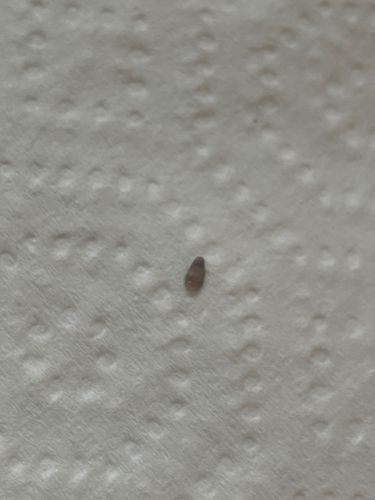Larder Beetle Larva (or similar Dermestid beetle larva)
Scientific Name: Likely Dermestes lardarius (Larder Beetle), or a related species in the family Dermestidae
Order & Family: Order: Coleoptera, Family: Dermestidae
Size: Larvae of Dermestes lardarius can range from 10-17 mm (0.4-0.7 inches) in length when fully grown. The specimen in the image appears smaller, possibly an early instar.

Natural Habitat
Dermestid beetle larvae are typically found in dark, undisturbed areas where organic matter is accumulated. This includes pantries, kitchens, basements, attics, natural history collections, and sometimes dead animals (in nature). They are often associated with stored food products, dried pet food, furs, woolens, and other animal products.
Diet & Feeding
These larvae are scavengers, feeding on a wide range of animal and plant products. Their diet includes dried meats, cheese, pet food, furs, leather, wool, dead insects, and other organic debris. They are known for their ability to digest keratin.
Behavior Patterns
Larder beetle larvae are characterized by their segmented, elongated bodies and often possess a hairy or bristly appearance, sometimes with two spines or 'urogomphi' at the rear. They are typically cryptic, shunning light (photonegative), and will crawl away quickly when disturbed. They undergo several instars (molts) as they grow before pupating. The pupa is usually formed in a protected location, often bored into wood or paper.
Risks & Benefits
Potential risks include damage to stored food products (contaminating them with feces and shed skins), furs, leather goods, and museum collections. They are considered household pests. However, some species are beneficial in forensic entomology, helping to determine time of death, and are used by taxidermists and museums to clean bones, as they consume soft tissues without damaging the bone.
Identified on: 10/4/2025